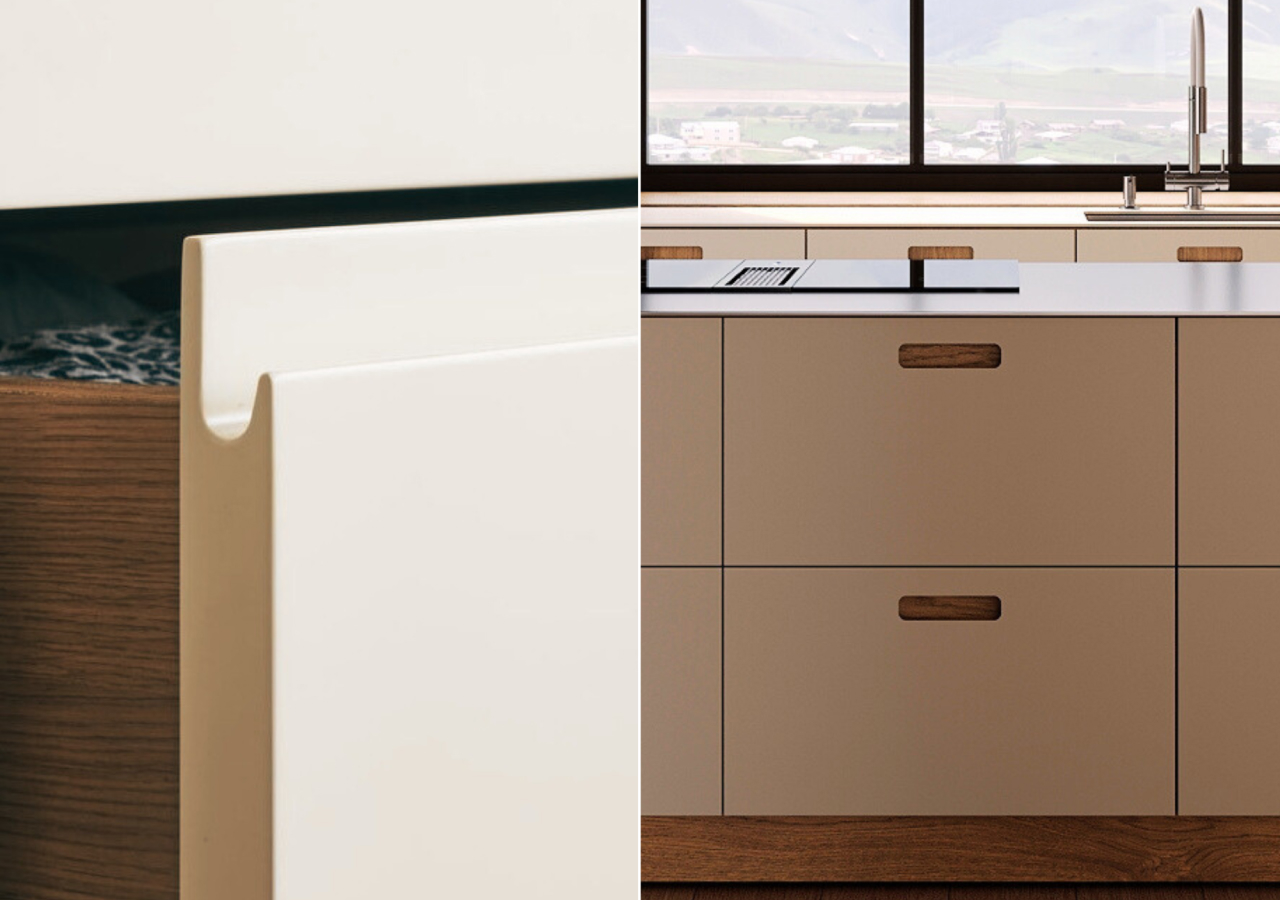For modern homeowners who prefer minimalist contemporary kitchen design, every detail has a practical function. Built-in appliances, efficient work areas, smooth cabinet fronts, and minimalist kitchen hardware choices that don’t add visual noise all help create a calm atmosphere and smooth operation. In this kind of space, routines run as evenly as the surfaces and fronts that represent them.
That’s why minimalist kitchen handles matter more than people expect. Handleless cabinet systems have become a foundation of modern minimalist kitchens, either fully handleless (with rails/channels) or “visually handleless” (with hidden, recessed grips). In this article, we’ll look at J-pulls and cut-out handles, the main differences between them, and what they offer for creating an elegant and practical handleless kitchen.
What Are Recessed Handles for Kitchen Cabinets?
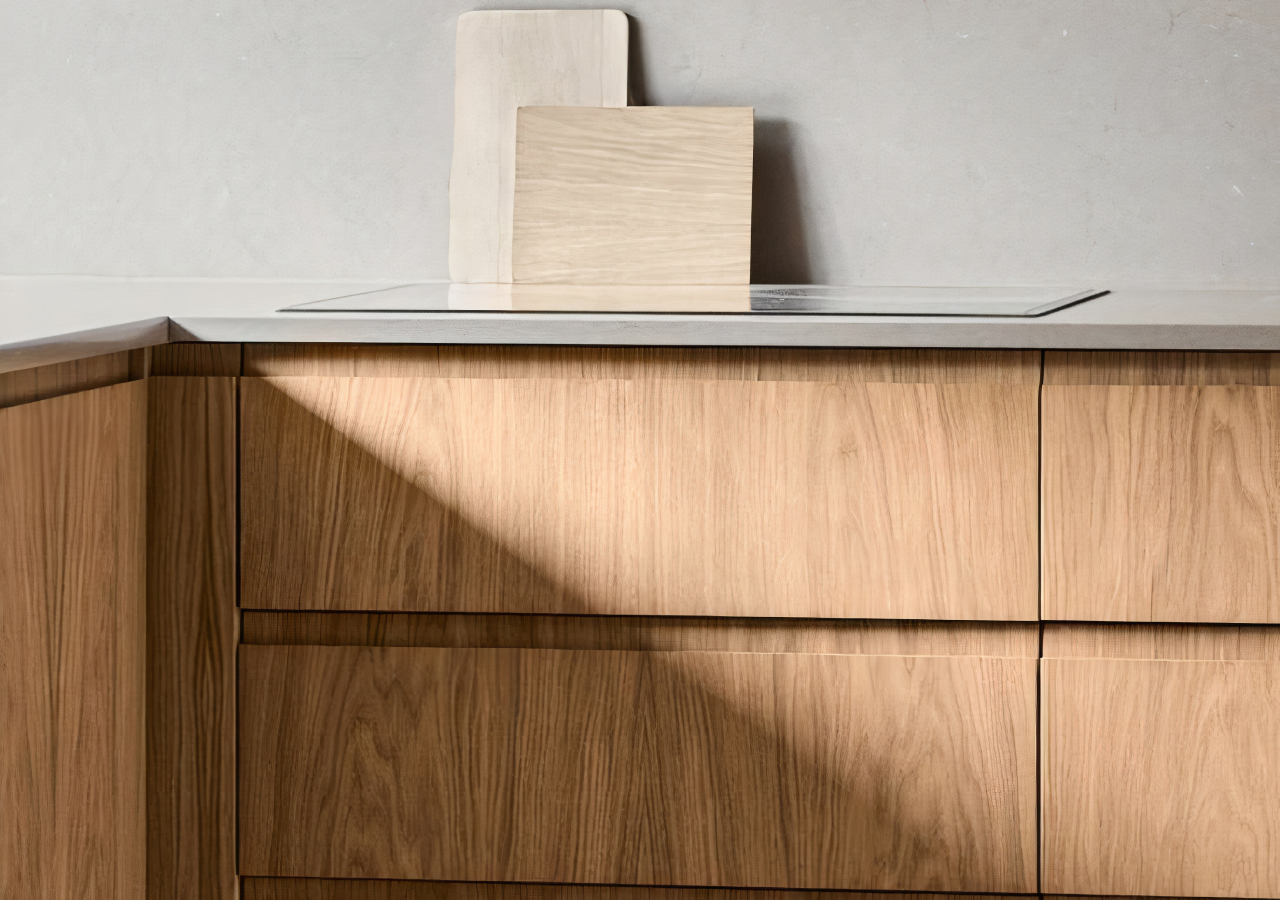
Recessed handles are grooves or channels that are built directly into the front of cabinets. Unlike traditional handles or knobs, they eliminate visual interruptions. Thus, they maintain the smooth appearance of cabinet doors, allowing the material of the doors themselves to take center stage. This handleless kitchen design is particularly popular in European-style kitchens, especially Scandinavian ones, where linear flow and surface continuity are important.
From a functional standpoint, recessed handles make kitchen cabinets look lighter by eliminating protruding elements while still allowing them to be used as regular door handles. Aesthetically, they complement modern kitchen design principles: simplicity, proportionality, and visual clarity. Additionally, recessed handles are considered safer in small kitchens because the risk of snagging or bumping into them is reduced.
Where Recessed Handles Matter Most
Recessed profiles are especially practical when your layout includes open shelving or narrow aisles. In an open shelf minimalist kitchen, protruding pulls can snag sleeves, catch bags, or just feel “in the way” when you’re moving quickly between prep and cleanup. Recessed options (like J-pulls and cut-outs) keep the front plane cleaner while still giving you a reliable place to grab, especially around sink runs, trash zones, and any cabinetry placed near shelves.
What Is a J-Pull Handle?
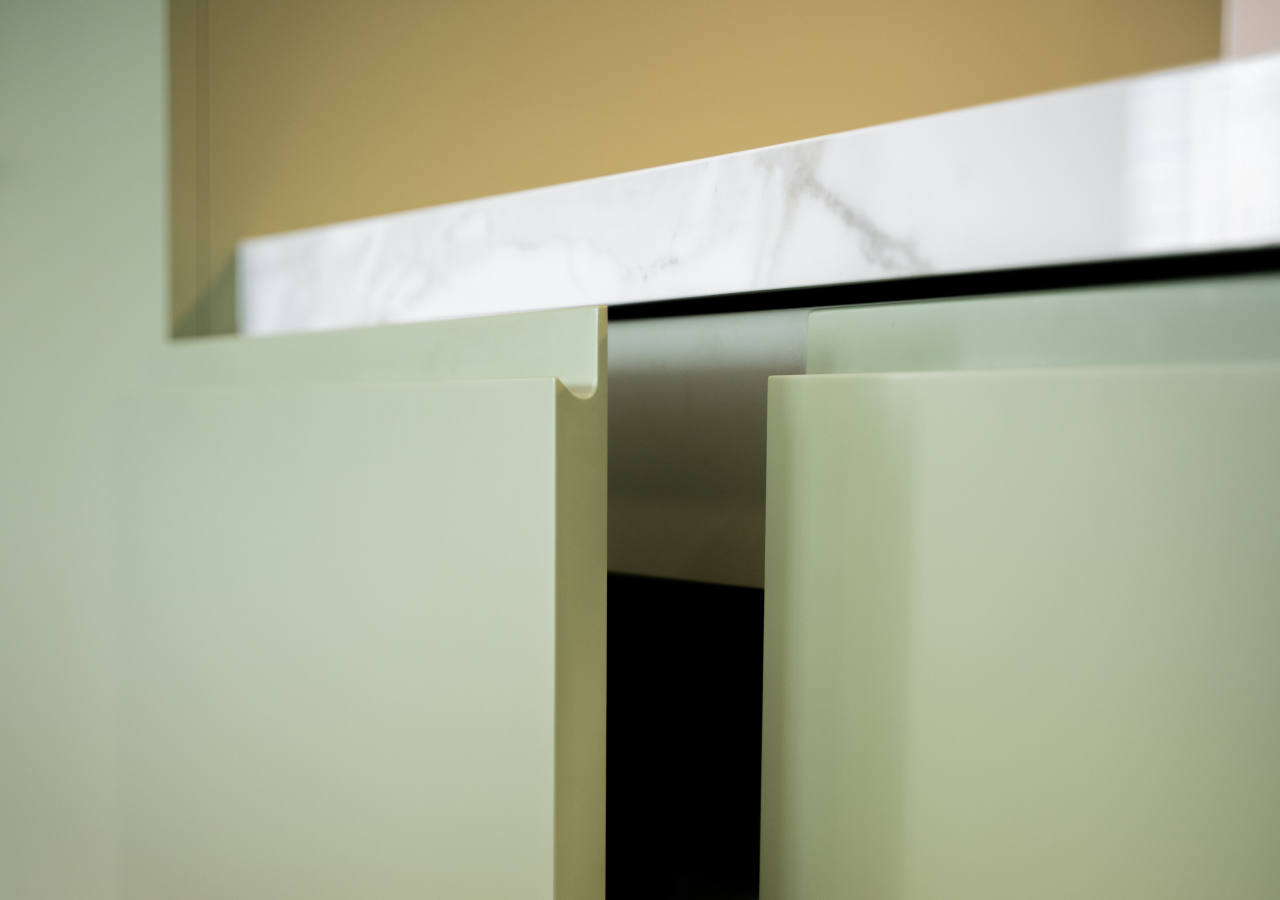
J-pull handles are a special type of recessed handle that features a J-shaped groove cut into the top or side of a cabinet or drawer front. This curved recess creates a finger grip area, providing a secure hold and smooth movement without the need for external fasteners.
In minimalist kitchens, kitchen cabinets with J-pull handles have a visually calm profile that blends well with modern frameless cabinet designs. The built-in handle is flush with the door panel, maintaining the streamlined kitchen design that modern homeowners love so much. The design of the cabinets is complemented by a certain linearity, as the handle itself is not visible, but the gaps between the drawers are.
J-pull cabinets are particularly common in modern handleless kitchen cabinets, which strive for a functional finish without compromising on ergonomics. It is a balanced solution for those who want a handleless look with a little extra grip.
Pros and Cons of J-Pull Handles
Pros
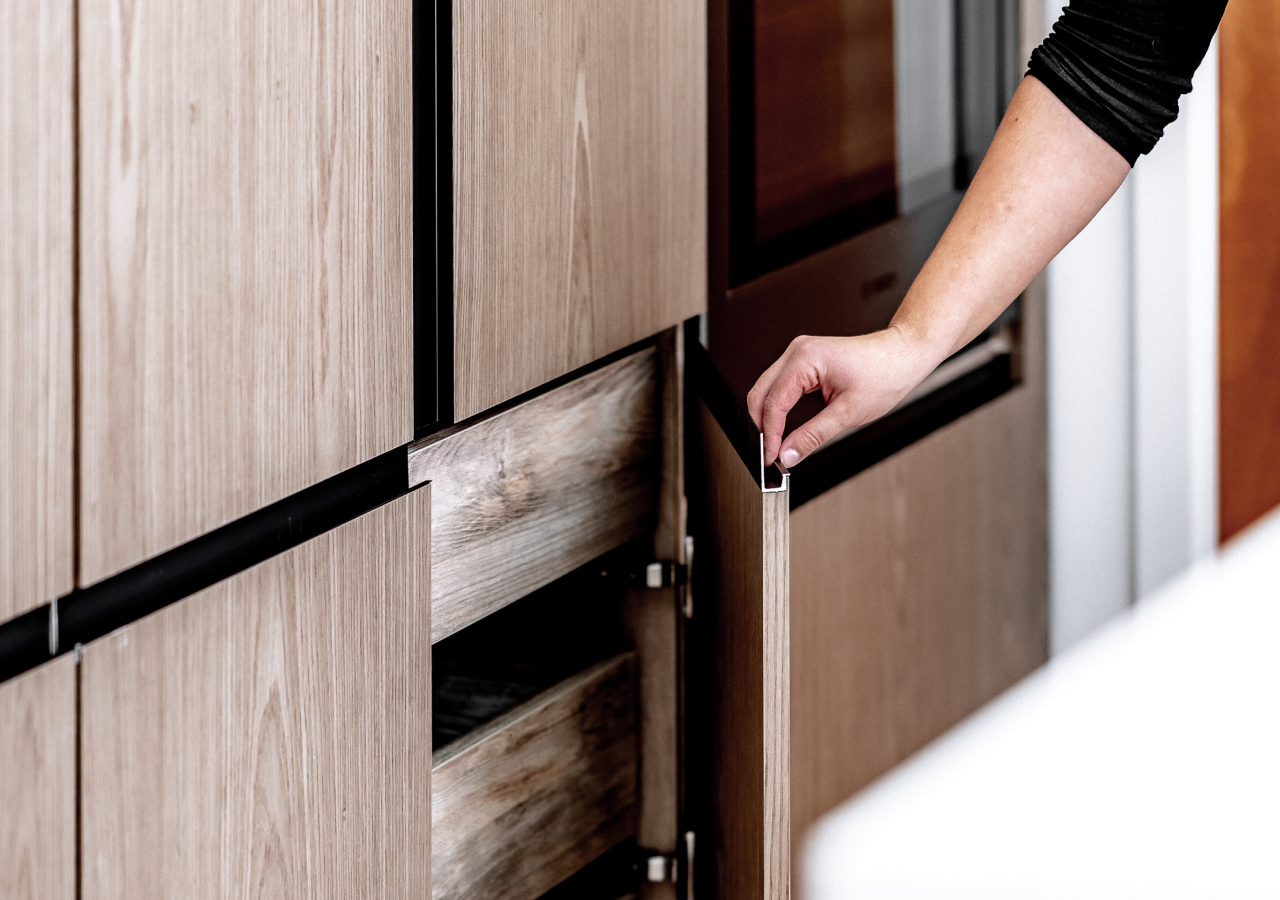
J-pull handles offer the perfect balance between aesthetics and functionality. Thanks to their integrated design, they create a sleek appearance and provide convenient access for fingers. They are especially useful in high-traffic kitchens, where quick and frequent use of cabinets requires practical solutions for gripping.
J-pull profiles also pair well with various finishes, from matte white to oak handleless cabinet fronts, making them a versatile design choice. They are easy to use and do not require additional mechanical systems such as push-to-open. In addition, they are usually easier to install and more affordable than completely handleless systems that require aluminum channels.
Cons
.webp)
Over time, dust and fingerprints can accumulate on J-pull cabinet handles. Compared to flat panels, they may require more thorough cleaning. These handles can give cabinet fronts a distinctive look, which may not suit homeowners who prefer completely flat surfaces.
In some minimalist kitchens, this additional visual element is seen as a compromise. Additionally, on large or heavy drawers, a shallow J-pull handle may not provide enough leverage to comfortably open them, especially those used to store pots, food, or appliances. This can be inconvenient, especially compared to deeper cutouts or full-length handles, which provide a more secure grip.
What Are Cutout Handles?
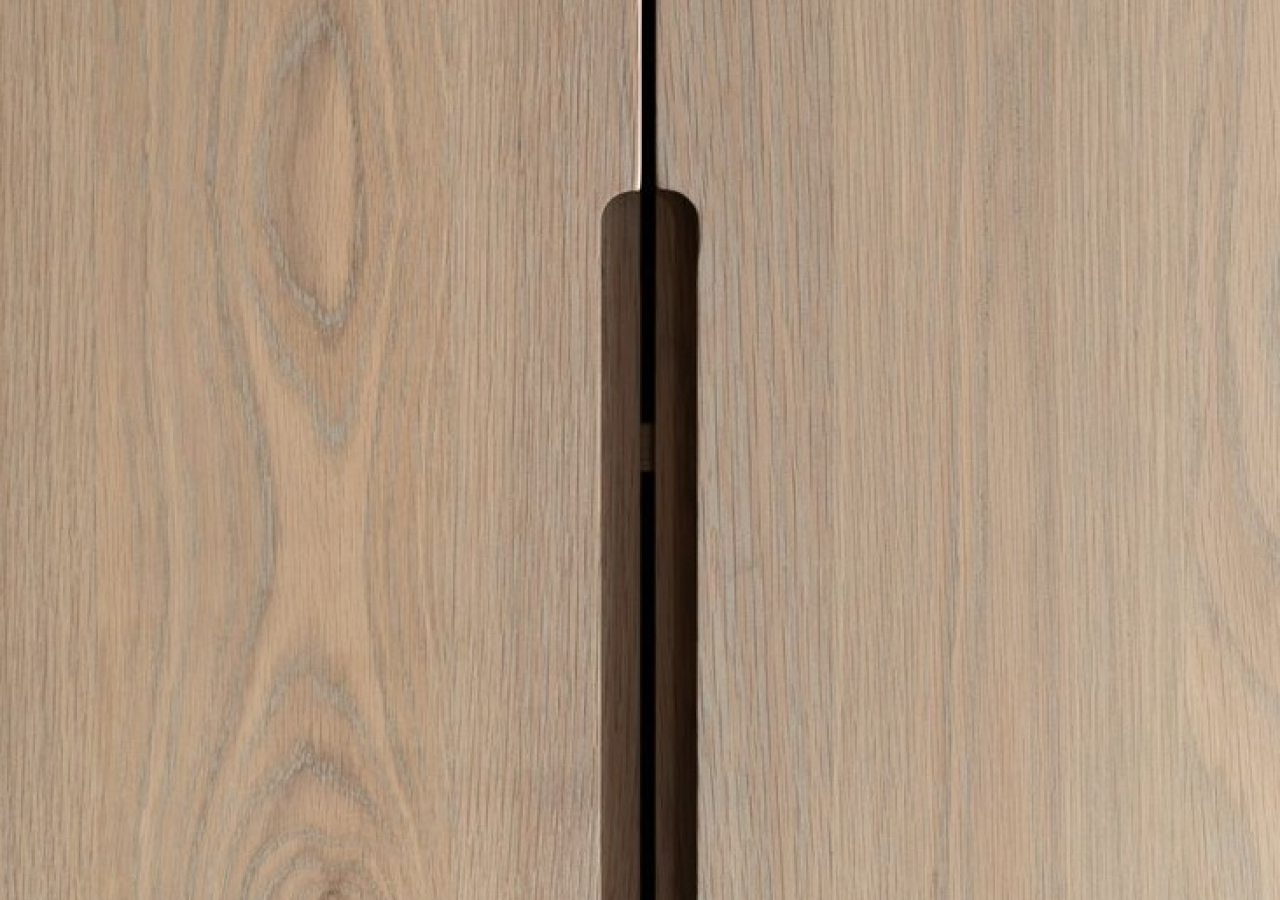
Cut-out handles are recessed finger grips that are literally cut out of the door or drawer front. Unlike J-pull handles, which have a molded profile, cut-outs are voids—intentionally created negative space in a geometric or organic shape that is used for gripping and pulling. They can be rectangular, round, or angular, depending on the cabinet design.
In handleless wooden kitchens, especially those using natural materials, cut-out handles add a sense of craftsmanship and architecture. They are often used to emphasize the contrast of materials, texture, and craftsmanship. Cut-out handles also offer a tactile, sculptural element of decor, softening the clean lines of kitchen cabinets and creating unique accents without adding hardware.
Pros and Cons of Cutout Handles
Pros
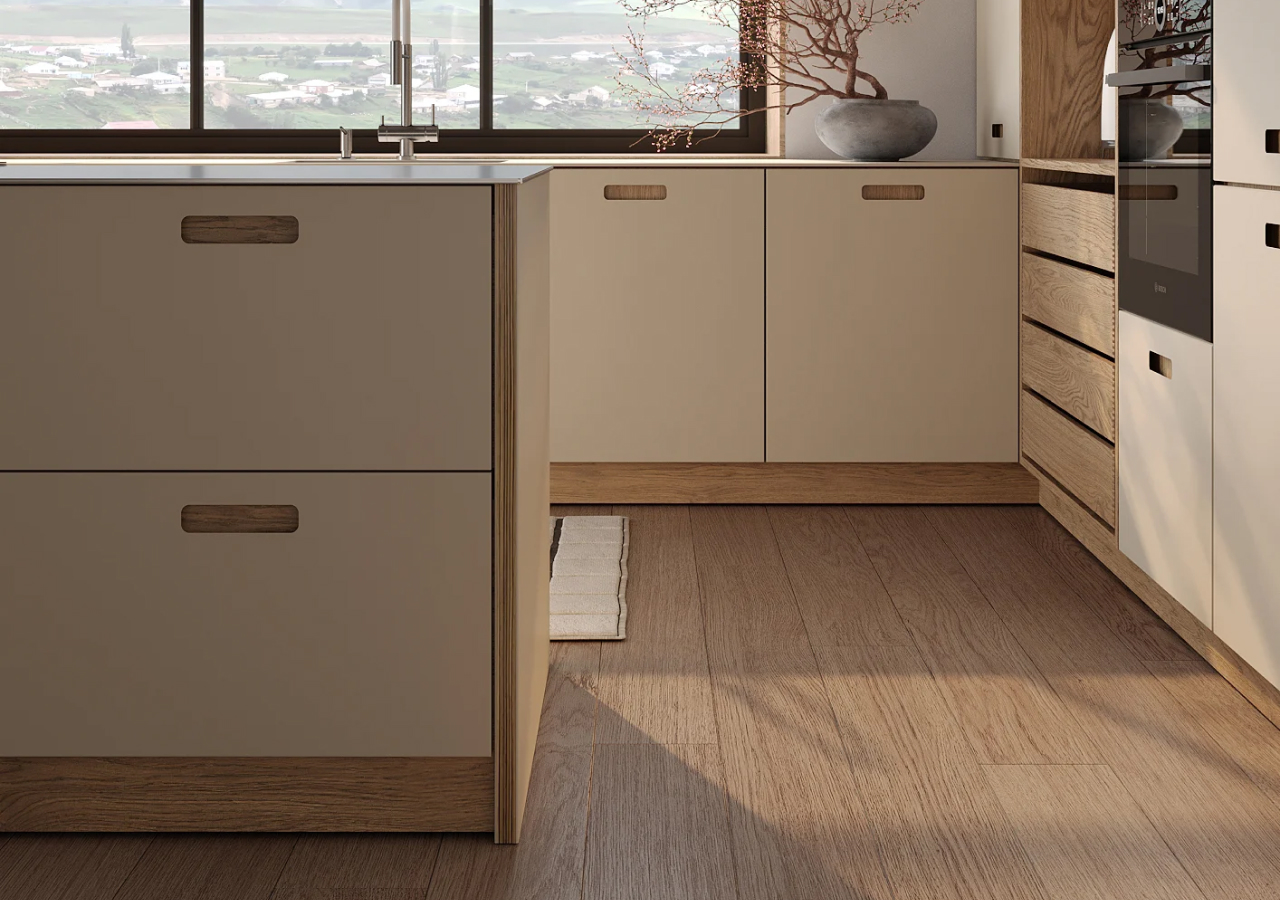
Cut-out door handles provide the subtle décor and built-in functionality required for minimalist kitchens while also adding visual depth and artistic nuances. They are ideal for kitchen designs that combine modern minimalist trends with distinctive individual details.
Cut-out handles also completely remove the need for hardware, ensuring maximum simplicity in handleless kitchen designs. Their versatility in shape and size allows for greater freedom in customizing cabinet designs. Since they do not rely on mechanical components, they are extremely durable and require minimal maintenance.
Cons
.jpg)
Since cut-out handles in kitchen cabinets vary in size and shape, they may be less ergonomic than other options with recesses. This is especially true if they are placed on cabinets with heavy drawers. They also require careful placement and precision in manufacturing, which can affect the price.
In busy kitchens, cabinets with cut-out handles can achieve a sculptural look, albeit at the expense of slightly reduced functionality. Additionally, crumbs and debris can gather in the cutout, necessitating regular cleaning. Some homeowners may also find the cabinets more difficult to grip if the cutout is too shallow or located in an inconvenient spot.
J-Pull Handle vs Cutout Handle: What to Choose?
.webp)
Both J-pull handles and cut-out handles belong to the category of recessed kitchen cabinet profiles, but they create different impressions and designs.
If you are looking for an elegant, modern kitchen with clear functionality and a comfortable grip, kitchen cabinets with J-pull handles are a more suitable option. Their simplicity also makes them the ideal choice for kitchens with integrated drawer and storage systems, where workflow plays a key role.
On the other hand, if you prefer natural textures, sculptural shapes, and tactile design, carved handles are the way to go. They are particularly effective in handleless oak kitchens and emphasize the depth of craftsmanship. The visual interest they add makes them suitable for modern homeowners who want to create an expressiveness that borders on minimalism.
If you’re planning the full system (front style + opening method + storage), see our guide about minimalist kitchen cabinets.
Ultimately, the decision depends on priorities: optimized efficiency or expressive minimalism. Both styles are strong options in modern handleless kitchen cabinets and can be implemented with the help of professionals.
Conclusion
In minimalist kitchen design, even the smallest choice—like the type of cabinet handle—can shape the daily experience of your home. Whether you choose J-pull profiles for their comfort and modern aesthetic or cutout handles for their design-forward sculptural look, your decision should reflect how you want your kitchen to feel and function.
At Corner Renovation, we help homeowners make smart, beautiful choices that elevate everyday living. Explore our kitchen collections or book a consultation to discover which handleless kitchen cabinet style best matches your vision.

